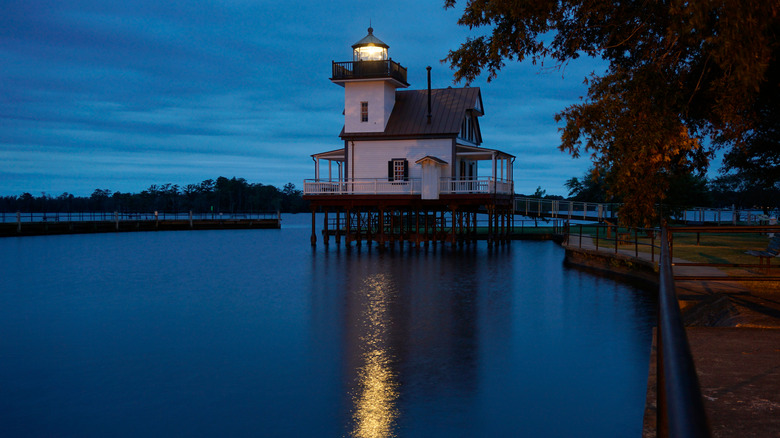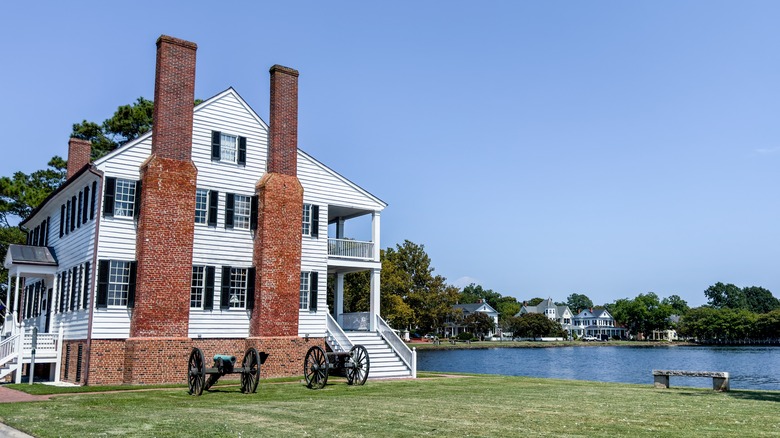North Carolina's Timeless Waterfront Town Is A Scenic Gem With A Vibrant, Historic Main Street For Strolling
The historic waterfront towns along North Carolina's Inner Banks provide some fascinating glimpses into the history of the New World. These towns are the oldest in the state: Original port towns where ships brought settlers from England and trade from its colonial neighbors. For example, the oldest town in North Carolina is Bath, on the Pamlico River.
Situated nearby, on the banks of the Roanoke River and Albemarle Sound, is another small, inviting town: Edenton. It is one of the state's most historic towns, the second oldest and the first colonial capital. It was incorporated in 1715 but likely founded earlier, and it was eventually named for the second British governor of the colony, Charles Eden. Eden's grave is located at the St. Paul's Church in town.
For many years, the town was the state's second-largest port city. Nautical know-it-alls might wonder how a town far inside the Outer Banks was crucial to the colony's shipping. The story is an interesting one: In those days, Roanoke Inlet provided a straight path into the Inner Banks and the port at Edenton. But search any modern marine chart, and you'll come up wanting because Roanoke Inlet no longer exists. The Outer Banks are known for their shifting sands and constantly changing topography, and Roanoke Inlet shoaled over and closed completely sometime around 1800. Today, the once inlet is the location of Nags Head, a chic beach town getaway.
Strolling through history in Edenton
As is typically the case with historic port towns, you should start explorations at the waterfront. The scenic 1886 Roanoke River Lighthouse marks the harbor and Colonial Park, where visiting boaters tie up to visit the town. Some are cruising along the East Coast's Intracoastal Waterway, which passes a few miles east of here. But many are locals from towns around Albemarle Sound, like nearby Plymouth, Columbia, and Hertford. Edenton is still a port of call, even if larger commercial hubs have surpassed it.
Stop by the 1782 Penelope Barker Welcome Center, a large colonial-era home on the harbor. There, you can pick up a brochure for the town's museum trail, a walking tour of the most historic buildings and sites around Edenton. One of the stops is the 1758 Georgian Cupola House. Located right downtown, it's now a museum and gardens open for tours every weekend.
Walking away from Albemarle Sound, head north on Broad Street. Edenton's historical importance is hard to believe today as you stroll around its bucolic main drag. The downtown area has shops and restaurants lining the sidewalk, perfect for strolling and discovering your next meal or gifts for friends and family. Several restaurants have great reviews and fresh local seafood.
Plotting a course for Edenton
Edenton is located on the Inner Banks, the interior rivers and sounds protected from the open sea by the famous Outer Banks. While it may have been convenient in the age of sail, today, it's a remote small town far from the major interstates. It's off U.S. Highway 17, a main north-south artery between Norfolk and the Carolina coast. If you're flying in, your best bets are Norfolk, an hour and a half north, or Raleigh-Durham, about two and a half hours west.
As a destination, Edenton is a big enough burg that it has a nice variety of places to stay for the night. If you're looking for budget road-trip options, there are a few chains along U.S.-17. However, to maximize your time in the walkable downtown area, consider booking into a charming bed and breakfast inns. The Inner Banks Inn is a top-rated choice on Broad and Albemarle Streets, with a five-star rating and a Traveler's Choice Award badge on Tripadvisor. The inn consists of five immaculately renovated historic buildings just steps from the waterfront.
Like much of Coastal Carolina, Edenton experiences mostly mild winters and warm, muggy summers. Average daily temperatures range from winter lows in the 30s to summer highs in the upper 80s. For walking around town, you'll find the most agreeable weather during spring or fall when the afternoon temperatures are cool enough to allow relaxing time outdoors. Your best bets are around May or September and October.


